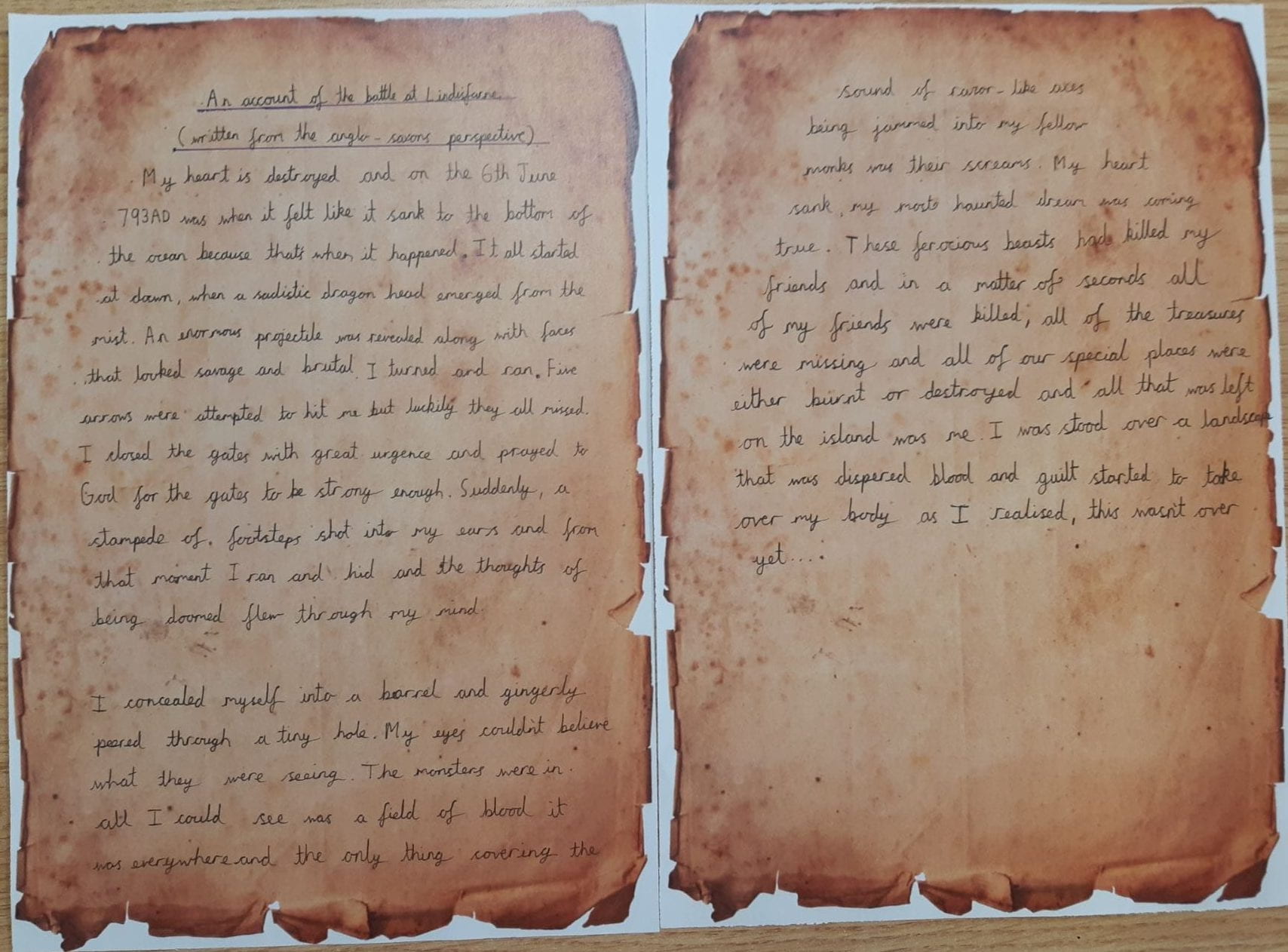After sketching our dragon-heads, we researched information about the Viking Longships and presented our work in a chosen style.
Here are a few examples of our work.








After sketching our dragon-heads, we researched information about the Viking Longships and presented our work in a chosen style.
Here are a few examples of our work.







In history, we have been finding out about the first Viking raid at Lindisfarne. We then retold this from an Anglo-Saxon point of view, showing bias against the Vikings. We focused on ambitious description, including a range of senses, and showing character’s feelings. Here are a few examples:





This half term, our topic is William Shakespeare’s Macbeth. A copy of our topic web can be downloaded below.

Birdwell Topic Map – Shakespeare’s Macbeth 2021
Welcome back! I hope everyone has had a relaxing half term. I am really looking forward to our new topic and seeing you all online at 9 am.
Below you will find our new topic map and also this week’s timetable.

Y5&6 Topic Map – Victorians – download a copy here

To end our Greek day, we enjoyed sampling the Greek food that we had prepared ourselves.
Throughout the day, the children took part in a range of activities and groups were chosen to help prepare food for our Greek feast in the afternoon. We made the following Greek dishes:
Tzatsiki – made from Greek yoghurt, cucumber and garlic (a tasty dip for our pitta bread)
Greek salad – using feta cheese, salad, tomatoes and cucumber
Greek bean salad – onions, chorizo, cannellini beans, red wine vinegar and honey were cooked in the pan, which were then added to a bowl of salad tossed in olive oil, lemon and seasoning.
For dessert, we had Greek yoghurt with raisins and honey.
(We were so busy that I only had chance to take a few photos of the food preparation.)



After break, we looked at the Greek alphabet and wrote our names in Greek, which was quite tricky for some as the Greek alphabet is based on sounds rather than individual letters. We made a bookmark using our name in Greek and traditional Greek patterns.
The afternoon started with using sources of evidence (pictures on Greek pots) to determine some of the events that took place in the Ancient Olympics.
This was followed by a QR code hunt. The class had to use an iPad to scan the QR codes to find the answers to the question on their sheet.
Some of the children also chose to make a Greek head wreath.
Our first activity in the morning was learning how to dance the Zorba – a traditional Greek dance. We watched a video for inspiration, learnt the basic steps and then created our own version of the dance in small groups.
Here are a couple of groups who chose to perform their dance to the class, and also a practice video.
We then worked together to recreate the dance in a circle – first the girls, then the boys, then the whole class! We had so much fun trying to keep the dance going when the tempo increased.
We have had a fantastic Ancient Greek day and I was so impressed with the children’s wonderful costumes. Thank you to all the parents (and grandparents) who put great effort into getting their children dressed up for the day. I must admit that Hades’ three-headed dog was an ingenious idea!













































Today, we have been learning about the Archimedes principle.

We first looked at how water is displaced when you get in the bath. We used an online resource to demonstrate the water level at different points of Archimedes bath time. We then had to interpret a line graph and explain what was happening at different times.

Our second activity was to investigate the volume of a marble by using our knowledge of displacement.
We repeated this process a few times to check that our results were accurate. We found that the volume of a marble was approximately 2 ml / 2 cm3.
I’d like to share with you our Ancient Greece display – I am so proud of the work the children have produced. There are some amazing examples of persuasive writing, where the children had to persuade people to come to either Athens or Sparta, and some fabulous diaries written from the perspective of different people involved in the Trojan War. Also shown are some of our wonderful masks – the rest are on display in the classroom.
